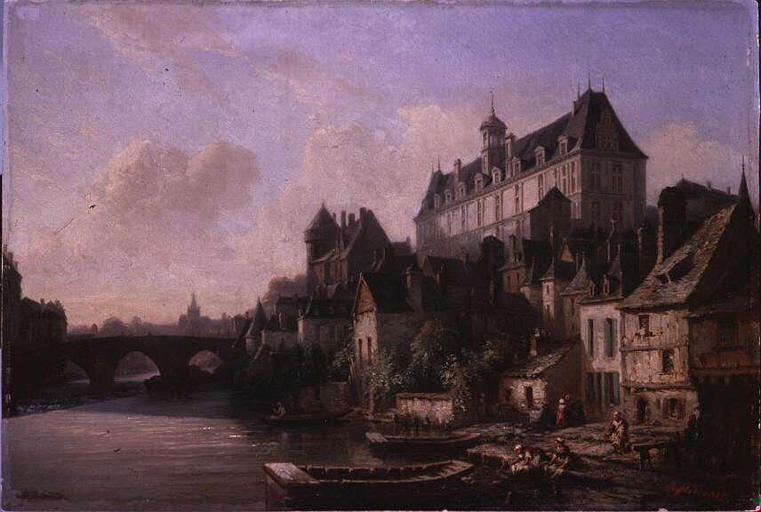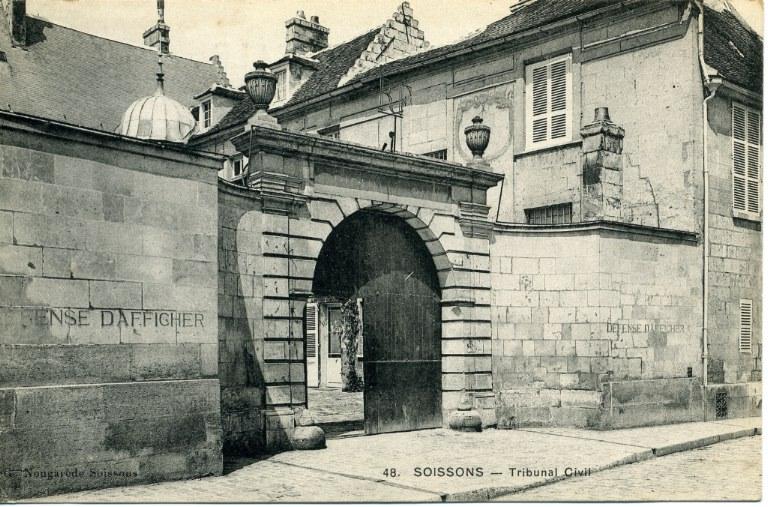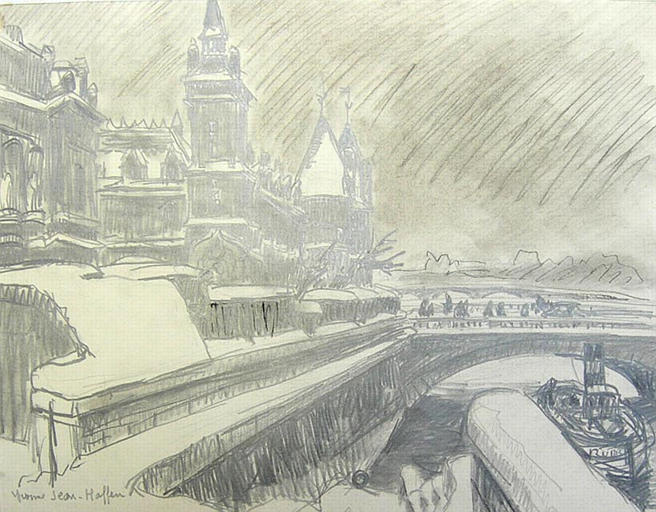Environ 60 résultats pour « Tribunal »
-

Tribunal
Le tribunal ou cour est un lieu où est rendue la justice. C'est là que les personnes en conflit viennent chercher la justice et celles qui n'ont pas respecté la loi sont jugées. Plus précisément, un tribunal n'est pas obligatoirement un service public de l'État. C'est notamment le cas d'un tribunal arbitral. En revanche, une juridiction est un organe étatique. Toutefois, dans un usage plus courant, les deux termes sont assimilés comme des synonymes. La juridiction d'un tribunal est aussi l'étendue territoriale de sa compétence. On parle alors, plus précisément, de son ressort (droit). En droit québécois, on parle plutôt de compétence territoriale, la compétence d'attribution établissant les matières que le tribunal connaît. L'expression « pleine juridiction » qualifie la compétence d'un tribunal à connaître à la fois des éléments de fait et des moyens de droit soulevés par les parties. Suivant le modèle français, dans de nombreux pays, la Cour de Cassation, n'ayant compétence que pour juger la conformité d'une décision au droit, n'a pas reçu « pleine juridiction ». En France, une Cour d'assises dispose d'une plénitude de juridiction : elle est compétente pour tout ce qu'elle souhaite, dans les conditions prévues par la loi. Certaines religions possèdent leurs propres tribunaux, dont le tribunal rabbinique, le tribunal de la charia et le tribunal ecclésiastique.
-

-
- Artiste(s) :
- Anonyme
31 (?) . - Espalion (Aveyron). L'Ancien Palais de Justice
-
- Domaine(s) :
- Ethnologie
- Photographie
-
-

CHATEAU-THIERRY - PROMENADE DE LA LEVEE ET PALAIS DE JUSTICE
-
- Domaine(s) :
- Ethnologie
- Philatélie
- Photographie
-
- Datation :
- XXe siècle
-
-

-

-
- Artiste(s) :
- Auguste Rodin
CONSOLES DU PALAIS DE JUSTICE DE DIJON, AU VERSO CLOCHETON …
-
- Domaine(s) :
- Dessin
-
- Datation :
- XXe siècle
-
-

-
- Artiste(s) :
- Yvonne Jean-Haffen
Le Palais de Justice de Rouen (1954) [titre attribué]
-
- Domaine(s) :
- Dessin
-
- Sujet représenté :
- Cour (architecture)
- Escalier
- Façade
- Grille (architecture)
- Rouen
- Tribunal
-
- Datation :
- XXe siècle
-
-

-
- Artiste(s) :
- Jean-Louis Forain
SCENE DE TRIBUNAL
-
- Domaine(s) :
- Peinture
-
- Datation :
- XIXe siècle
- XXe siècle
-
-

-
- Artiste(s) :
- Jean-Louis Forain
LA PLAIDOIRIE, 1907
-
- Domaine(s) :
- Peinture
-
- Sujet représenté :
- Plaidoirie
- Tribunal
-
- Datation :
- XXe siècle
-
-

DEPART DE LOUIS XV APRES LE LIT DE JUSTICE.12 SEPTEMBRE 1715
-
- Sujet représenté :
- Carrosse
- Foule
- Louis XV de France
- Noblesse
- Paris
- Place (voie)
-
- Datation :
- XVIIIe siècle
-

-
- Artiste(s) :
- Jean-Louis Forain
Scène de tribunal
-
- Domaine(s) :
- Peinture
-
- Sujet représenté :
- Femme
- Juge
- Jugement (droit)
- Nourrisson
- Tribunal
-
- Datation :
- XIXe siècle
- XXe siècle
-
-

Le procès en cours d'appel
-
- Domaine(s) :
- Peinture
-
- Sujet représenté :
- Discussion
- Femme
- Homme
- Juge
- Plaidoirie
- Tribunal
-
- Datation :
- XIXe siècle
-
-

-
- Artiste(s) :
- Jean-Baptiste Messager
LAVAL : CHATEAU ET PALAIS DE JUSTICE
-
- Domaine(s) :
- Peinture
-
- Datation :
- XIXe siècle
-
-

-
- Artiste(s) :
- Jean-Baptiste Messager
LAVAL : LAVEUSES SUR LA RIVE DROITE AU BAS DU PALAIS DE JUS…
-
- Domaine(s) :
- Peinture
-
- Sujet représenté :
- Arbre
- Château
- Discussion
- Femme
- Laval (Mayenne)
- Lessive
- …
-
- Datation :
- XIXe siècle
-
-

PALAIS DE JUSTICE, A GRENOBLE (Isère) (titre inscrit)
-
- Domaine(s) :
- Estampe
- Ethnologie
-
- Datation :
- XIXe siècle
-
-

PALAIS DE JUSTICE, A ROUEN (Seine-Inférieure) (titre inscri…
-
- Domaine(s) :
- Estampe
- Ethnologie
-
- Datation :
- XIXe siècle
-
-

-
- Artiste(s) :
- Anonyme
LA TERRE ET SES HABITANTS (titre inscrit)
-
- Domaine(s) :
- Estampe
- Ethnologie
-
- Sujet représenté :
- Amérindiens
- Argentine
- Boisson
- Brésil
- Carquois
- Costume traditionnel
- …
-
- Datation :
- XXe siècle
-
-

COUR D'ASSISES D'ORLEANS, AFFAIRE MONTELY (titre inscrit)
-
- Domaine(s) :
- Estampe
- Ethnologie
-
- Sujet représenté :
- Arrestation
- Chaise
- Chambre à coucher
- Couteau
- Crime
- Femme
- …
-
- Datation :
- XIXe siècle
-
-

ARRET DE LA COUR D'ASSISES DE LA SEINE (titre inscrit)
-
- Domaine(s) :
- Estampe
- Ethnologie
-
- Datation :
- XIXe siècle
-
-

COUR D'ASSISES DE LA SEINE (titre inscrit)
-
- Domaine(s) :
- Estampe
- Ethnologie
-
- Sujet représenté :
- Femme
- Homme
- Juge
- Jugement (droit)
- Tribunal
-
- Datation :
- XIXe siècle
-
-

-
- Artiste(s) :
- Honoré Daumier
Le Défenseur
-
- Domaine(s) :
- Dessin
-
- Sujet représenté :
- Plaidoirie
- Tribunal
-
- Datation :
- XIXe siècle
-
-

-
- Artiste(s) :
- Thomas Couture
Salle du tribunal de Senlis
-
- Domaine(s) :
- Dessin
-
- Sujet représenté :
- Tribunal
-
- Datation :
- XIXe siècle
-
-

-
- Artiste(s) :
- Thomas Couture
Salle d'audience du tribunal de Senlis
-
-

-
- Artiste(s) :
- Edme-Adolphe Fontaine
La Haute Cour à Versailles en 1849
-
- Domaine(s) :
- Peinture
-
- Sujet représenté :
- Procès
- Tribunal
- Versailles
-
- Datation :
- XIXe siècle
-
-

-

4 - Marseille - Le Palais de Justice
-
- Domaine(s) :
- Architecture
- Ethnologie
- Philatélie
- Photographie
-
- Datation :
- XXe siècle
-
-

-
- Artiste(s) :
- Éditeurs français de cartes postales
Soissons -Tribunal Civil
-
- Domaine(s) :
- Ethnologie
- Photographie
-
- Datation :
- XXe siècle
-





